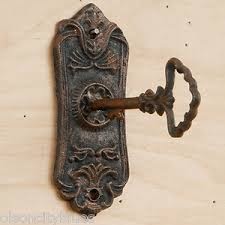LACE & EYELETS IN THE
BUTTONS BOX
THE BOOK
..........................-
TENDER
BUTTONS
THE SUBBOOK
...................-
OBJECTS
THE SUBPOEM
...................- A
LEAVE: NUMBER 52
WORD
COUNT......................-
24
STANZA(S)............................-
1
THE SUBPOEM
...................- SUPPOSE
AN EYES: NUMBER 53
WORD
COUNT......................-
107
STANZA(S)............................-
6
THE
LEADER........................-
THE STEINY ROAD POET
CO-LLABORATORS..............-
MODPO
STUDENTS/THE BUTTONS
GENRE..................................-
VIRTUAL OPERA
LOCATION............................-USA,
UK, Australia, Philippines, S. Africa, Canada.
TIME......................................-
ALL HOURS OF EARTH’S CLOCK
TONE.....................................-
HYPER ALERT
“Grammar
does not need a balustrade to be broken” from “Arthur A Grammar” Gertrude Stein
“Have
we been impaled by the rouge use of language?” Peter Treanor
“There's that
fencing feint with a leading wrist.” Allan
Keeton
And finally
here are the high culture associations made
by The Buttons Collective as noted in Stepping
on Tender Buttons: “A Leave.", “Suppose An Eyes." Part 1 of 3, As
you will note, Dear Reader, popular culture (i.e. low culture) mixes in here as
well.
WIDENING THE
CIRCUMFERENCE: BLAKE, DICKINSON, HOWE
Allan:
“I love the embodied
book becoming present here.
“The white
being blackened with text.
Not just any
text this-
text.
“The pages
being seated in the binding and bound.
This binding
is covered with leather, which is cow skin,
as we are
bound in skin.
“It reminds
me of Blake:”
Energy is
the only life and is from the Body and Reason is the bound or outward
circumference of Energy.
“The
beautiful made beautiful.”
beautiful
beautiful,
beautiful
beautiful.
“Such fullnessess
of beatitudes.”
Eleanor Smagarinsky:
“Allan, I
googled that line from Blake (I am terribly ignorant, having never read him)
and found that it comes from the book Marriage
of Heaven & Hell. Wiki says this:”
Blake's
text has been interpreted in many ways. It certainly forms part of the
revolutionary culture of the period. The references to the printing-house
suggest the underground radical printers producing revolutionary pamphlets at
the time. Ink-blackened printworkers were comically referred to as a
"printer's devil", and revolutionary publications were regularly
denounced from the pulpits as the work of the devil.
“So the
blackening is what really happened as the books were printed. Beautiful
Beautiful.”
Dave Green responded to the quotation from Blake
by quoting Emily Dickinson:
Energy
is the only life and is from the Body and Reason is the bound or outward circumference
of Energy. [William Blake]
Circumference in a poem immediately makes me think
of Emily Dickinson, for whom it was a key word:
378
I saw
no Way—The Heavens were stitched—
I felt
the Columns close—
The
Earth reversed her Hemispheres—
I
touched the Universe—
And
back it slid—and I alone—
A Speck
upon a Ball—
Went
out upon Circumference—
Beyond
the Dip of Bell—
883
The
Poets light but Lamps—
Themselves—go
out—
The
Wicks they stimulate—
If
vital Light
Inhere
as do the Suns—
Each
Age a Lens
Disseminating
their
Circumference—
Letter
written by Emily Dickinson, to Thomas Wentworth Higginson (July 1862):
...My
business is circumference. An ignorance,
not of
customs, but if caught with the dawn, or the sunset see me, myself the only
kangaroo among
the
beauty, sir, if you please, it afflicts me, and I thought that instruction
would take it away.
Eleanor advanced the literary touchstones by
bringing contemporary poet Susan Howe into this exchange:
CIRCUMFERENCE
: the length
of a line that goes around something or that makes a circle or other round
shape
: the outer
edge of a shape or area
“This is so
interesting, as Stein seems to be doing a lot of maneuvering in her language
during the last few poems—streaming, pounding, making, shining, going, sighing,
leaving, hunting, saying, leading, supposing, opening, closing, needing,
blackening, signing, wearing, reading, shutting, going, collapsing, purring,
rubbing, selling.
“If you were
to somehow chart all of her movements as dots on a map, and then step away from
it and get a bigger picture by joining the dots, it may well look like the
circumference of her textual world. Seeing the pattern in this (I'm talking
theoretically, I do not believe one over-arching pattern exists other than in
her very DNA) is our attempt (we are only human!) to see reason/the rational in
chaos:
“Blake
(thanks, Allan) - Reason is the bound or outward
circumference of Energy.
“Dickinson
(thanks, Dave) - I thought that instruction would take it away
“Now,
Susan Howe discusses Dickinson & Stein together in her book, and she uses this phrase:
‘space
of time filled with moving.’
which I
think is apt for our conversation.
Also
quite beautiful to see the movements of Dickinson in her own poems:
378
saw
stitched
felt
close
reversed
touched
slid
Went
out
Dip
883
light
go out
stimulate
Light
Inhere
Disseminating
[What a
contrast!]
Here Steiny
pauses to quote Robert
Pinsky who said of this poem that Dickinson “seems to say that each age widens or disseminates the
light of a poem in a different way.” Surely this kind of Dickinsonian
dimensionality is what modernist high and low culture, fractured commentary
mixed with unstructured, anything-goes postmodern chat that is all part of how
The Buttons Collective operates in studying Tender
Buttons. Also Eleanor’s commentary speaks to Chaos Theory and how Stein’s
verb use insisting on immediacy (newness) keeps us as readers from nailing down
absolutes.















